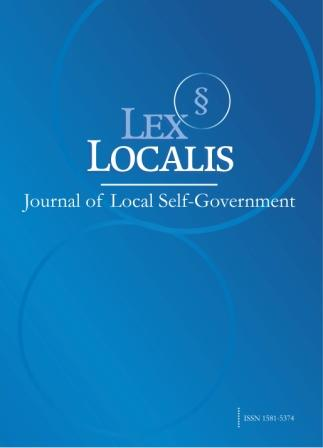The Evolution of Game Payment Mechanisms and Adaptation to Consumer Behavior in Different Markets in a Global Perspective
DOI:
https://doi.org/10.52152/3157Keywords:
technology acceptance model; structural equation modeling; game payment; consumer behaviorAbstract
The competition in the game industry is becoming increasingly fierce under the global perspective, and a full understanding of the motivational behavior and willingness to pay of consumers in different markets can help to optimize the payment mechanism of the game, so as to enhance the competitiveness of the game industry. The article constructs a hypothetical model between internal and external motivations of consumer behavior and willingness to pay in different markets by taking the motivational behavior model and technology acceptance model as the basis and combining with structural equation modeling. A questionnaire containing each model variable was designed to obtain research data to analyze the specific influence of internal and external motivations of consumer behavior on willingness to pay.SEM test results show that at the 0.05 significance level, the path coefficients of the internal and external motivations of consumer behavior on willingness to pay in different markets are 0.163 and 0.174, respectively, which are of significant influence. And the immersion experience and perceived ease of use in the model between consumer behavioral motivation and willingness to pay has a fully mediated effect, the effect value is 0.538 and 0.835, respectively, both significant at the 1% level. Consumer behavioral motives in different markets will affect their willingness to pay, so the game payment mechanism needs to clearly delineate the payment boundary as well as optimize the utility value of virtual goods in order to motivate consumers in different markets to be willing to pay for the game.
References
Marchand, A., & Hennig-Thurau, T. (2013). Value creation in the video game industry: Industry economics, consumer benefits, and research opportunities. Journal of interactive marketing, 27(3), 141-157.
Cohendet, P., Grandadam, D., Mehouachi, C., & Simon, L. (2018). The local, the global and the industry common: the case of the video game industry. Journal of Economic Geography, 18(5), 1045-1068.
O’Donnell, C. (2012). The North American game industry. The video game industry: Formation, present state, and future, 99-115.
Syahrivar, J., Chairy, C., Juwono, I. D., & Gyulavári, T. (2022). Pay to play in freemium mobile games: a compensatory mechanism. International Journal of Retail & Distribution Management, 50(1), 117-134.
Liu, S., Wei, Y., Nan, G., & Li, D. (2024). Pay-to-play versus hybrid bundling for digital game platforms in digital decarbonization era. Annals of Operations Research, 1-34.
Lundy, T., Raman, N., Fu, H., & Leyton-Brown, K. (2024, March). Pay to (Not) Play: Monetizing Impatience in Mobile Games. In Proceedings of the AAAI Conference on Artificial Intelligence (Vol. 38, No. 9, pp. 9856-9864).
Kshetri, N., & Voas, J. M. (2022). Ransomware: Pay to play?. Computer, 55(3), 11-13.
Davidovici-Nora, M. (2013). Innovation in business models in the video game industry: Free-To-Play or the gaming experience as a service. The computer games journal, 2, 22-51.
Zhang, X., Chang, J., & Zhou, Y. (2022). Study of the charging mechanism of knowledge payment platforms based on a tripartite game model. Enterprise Information Systems, 16(6), 1846791.
Alha, K., Kinnunen, J., Koskinen, E., & Paavilainen, J. (2018, October). Free-to-play games: Paying players' perspective. In Proceedings of the 22nd International Academic Mindtrek Conference (pp. 49-58).
Lelonek-Kuleta, B., Bartczuk, R. P., & Wiechetek, M. (2021). Pay for play–Behavioural patterns of pay-to-win gaming. Computers in Human Behavior, 115, 106592.
Tomić, N. Z. (2018). Economic model of microtransactions in video games. Journal of Economic Science Research, 1(1).
Osathanunkul, C. (2015). A classification of business models in video game industry. International Journal of Management Cases, 17(1), 35-44.
Yang, F., Lai, Z., & Kong, R. (2023). A Study on the Influencing Factors of Online Game Characters' Willingness to Deal with Fees. Manufacturing and Service Operations Management, 4(3), 64-73.
Flunger, R., Mladenow, A., & Strauss, C. (2019). Game analytics on free to play. In Big Data Innovations and Applications: 5th International Conference, Innovate-Data 2019, Istanbul, Turkey, August 26–28, 2019, Proceedings 5 (pp. 133-141). Springer International Publishing.
Koeder, M. J., & Tanaka, E. (2017). Game of chance elements in free-to-play mobile games. A freemium business model monetization tool in need of self-regulation?. International Telecommunications Society (ITS).
Jiang, J. (2020). A Study of Game Payment Data Mining: Predicting High-Value Users for MMORPGs. In Trends and Applications in Knowledge Discovery and Data Mining: PAKDD 2020 Workshops, DSFN, GII, BDM, LDRC and LBD, Singapore, May 11–14, 2020, Revised Selected Papers 24 (pp. 181-192). Springer International Publishing.
Balnaves, M., & Madden, G. (2016). Social games and game-based revenue models. Social, Casual and Mobile Games: The Changing Gaming Landscape, 195.
Jhanghiz Syahrivar,Chairy Chairy,Ignatius Darma Juwono & Tamás Gyulavári. (2021). Pay to play in freemium mobile games: a compensatory mechanism. International Journal of Retail Distribution Management(1),117-134.
Tamás Vinkóczi,Izabella Mária Végvári,Martina Németh & Judit Petra Koltai. (2024). Consumer impulse buying in Hungary: A CB-SEM analysis of Hungarian consumer behaviour towards mobile short video applications based on a Chinese reference model. Computers in Human Behavior Reports100522-100522.
Dahlin Sean,Oja Brent D.,Avey James B. & Sullivan Gregory S. (2024). The influence of servant leadership on athletic performance: a self-determination theory perspective. Sport, Business and Management: An International Journal(5-6),774-789.
Irfan Ali & Nosheen Fatima Warraich. (2024). Use and acceptance of technology with academic and digital libraries context: A meta-analysis of UTAUT model and future direction. Journal of Librarianship and Information Science(4),965-977.
Murrar Abdullah,Asfour Bara & Paz Veronica. (2024). Banking sector and economic growth in the digital transformation era: insights from maximum likelihood and Bayesian structural equation modeling. Asian Journal of Economics and Banking(3),335-353.
Downloads
Published
Issue
Section
License
Copyright (c) 2025 Lex localis - Journal of Local Self-Government

This work is licensed under a Creative Commons Attribution-NonCommercial-NoDerivatives 4.0 International License.








